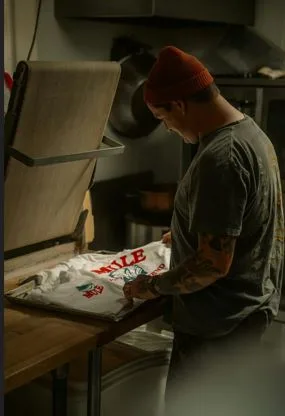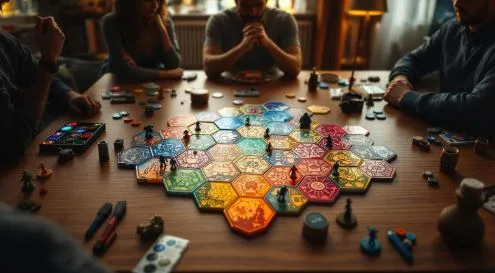What Every Event Organizer Should Know About Health and Safety
Planning an event takes more than just creativity and coordination. Health and safety should be a core part of the process from the very beginning. Whether you’re hosting a music festival, a corporate retreat, or a community fundraiser, keeping people safe isn’t just about compliance; it’s about responsibility.
When large groups gather, there’s always the chance that something can go wrong. A guest could trip, someone could have an allergic reaction, or the weather could shift quickly. Even smaller events come with risks that need to be managed. Having a plan helps reduce those risks and makes it easier to respond if something does happen.
Your attendees expect a smooth and safe experience. It’s your job to provide it. That starts with understanding the basics of health and safety preparation and building a team that knows how to handle unexpected situations.
Onsite Medical Support Is Non-Negotiable
Any event, regardless of its size, should have a medical response option ready. Having someone trained to handle health emergencies gives everyone peace of mind. Medical issues at events aren’t rare. From dehydration to twisted ankles or more serious conditions, they happen more often than you’d expect.
Hiring an event medic is one of the first steps in making sure your event is covered from a health and safety standpoint. These professionals are trained to respond quickly to injuries, heat illness, or sudden health emergencies, giving attendees and organizers peace of mind. Whether they’re stationed in a mobile unit or walking the grounds, their presence makes a big difference. They can assess situations on the spot and make decisions about next steps, whether it’s providing first aid or calling for transport.
Working with trained medics also means you’ll have help documenting incidents and understanding how to report them correctly. This level of support helps protect everyone involved and improves your event’s overall safety plan.
Crowd Size Dictates Medical Coverage
How many people are attending your event matters. Larger crowds create more risk, and that requires more preparation. The higher the number of attendees, the more support you’ll need in place. This includes not just medical staff but also first aid stations, signage, and communication protocols.
Start by estimating the number of guests at peak hours. Then look at how spread out your venue is. A compact indoor space may require fewer medics than a multi-acre outdoor festival with the same headcount. Make adjustments based on the layout, weather conditions, and the type of activities happening.
Check with local agencies, too. Some cities or counties have minimum requirements for medical staffing based on expected crowd size. Even if there’s no official rule, it’s smart to go above the bare minimum. Planning ahead reduces the risk of delays in case of an emergency and shows you’re committed to a safe event environment.
Communication Plans Keep Everyone Aligned
Clear communication is one of the most important parts of any safety plan. When something happens, every second counts. Your staff, volunteers, vendors, and emergency response teams need a way to share information quickly and accurately.
Start by choosing reliable tools. Two-way radios are still one of the best options for events, especially when mobile signals are weak or slow. Assign each team a dedicated channel—medical, security, logistics, and operations—so updates don’t get lost in cross-talk. Test all radios before the event begins.
Create a contact list for all team leads, medical staff, and venue support. Include printed copies in case devices fail. Run through common scenarios in advance: lost child, medical emergency, fire alarm, or crowd disturbance. Everyone should know who to contact and where to report.
This level of coordination keeps problems small and manageable. When your team communicates well, guests are more likely to feel safe and supported throughout the event.
Environmental Risks Should Be Planned for Early
Your venue affects your safety plan. Each space brings unique challenges that need attention before the event begins. For outdoor spaces, pay attention to terrain, weather, and available shade. Rain, heat, wind, or uneven ground can all create risks for guests and staff.
Plan for hydration. Make water stations available across the site and restock them throughout the day. Add cooling areas for hot-weather events. Provide shaded rest zones and watch for signs of heat exhaustion. Even in mild temperatures, dehydration happens quickly in crowded areas.
For indoor venues, focus on airflow, exits, and lighting. Avoid blocking vents with signage or equipment. Make sure pathways are clear and exits are marked. Walk through the entire space in advance to check for tripping hazards, loose cables, or poorly lit corners.
No matter where your event takes place, it’s your job to anticipate risks and take steps to reduce them. Walk the venue as if you were a guest—this helps you spot problems early.
Emergency Access and Evacuation Routes Must Stay Open
In the middle of setup, it’s easy for teams to block exits with carts, signs, or gear. But emergency routes need to stay open the entire time. Talk to vendors and crew members about which areas must remain clear, and mark these routes clearly.
Work with local emergency services to plan access points for ambulances or fire crews. Share this plan with your staff and volunteers. Post visible maps backstage or in staff-only areas. If your event happens at night or indoors, use backup lighting for emergency exits in case of a power cut.
Evacuation plans aren’t just for large-scale disasters. Sometimes, a power issue, burst pipe, or crowd surge is enough to require moving people out quickly. Your team should be ready to guide guests to safety in a calm and fast way.
Doing one practice run before the event helps everyone feel more confident. It’s a small step that could make a big difference later.
Health and safety are part of what makes an event work, not just added details. When your plan covers communication, staffing, environment, and access, the whole experience runs smoother. Thinking ahead and acting early helps protect your team, your guests, and your event’s reputation. A safer event is a better event—for everyone involved.






